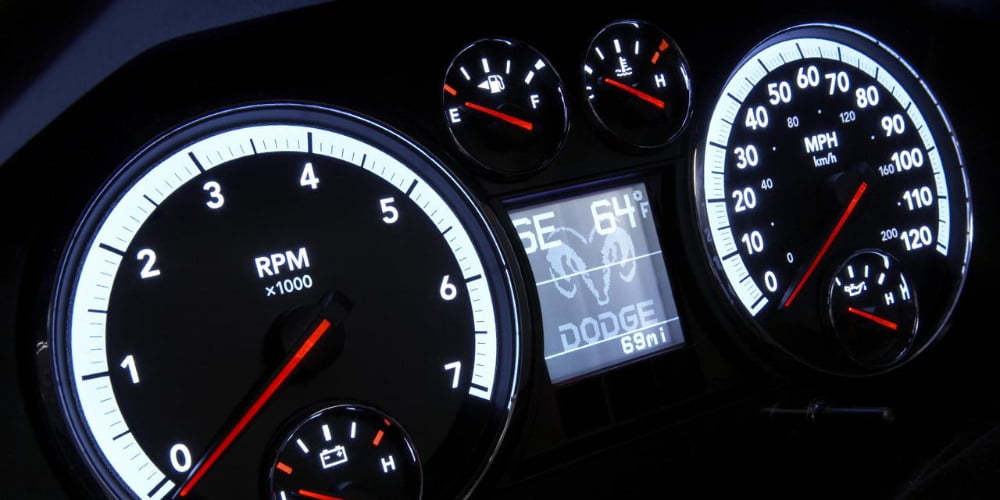Why My Dodge RAM Check Engine Light Blinks 10 Times?

Whenever I drive my Dodge RAM check engine light blinks 10 times, I know it is time to replace my oil. This is a common problem, and can be easily fixed by changing your oil. It is important to keep in mind that your oil should be changed at least every 3,000 miles. The oil in your engine is important for a number of reasons, including helping to protect your engine from wear and tear.
Dodge RAM Check Engine Light: Low Oil
Having a low oil level can be dangerous for your vehicle. It can cause damage to your engine. It can also result in an oil leak. You should also make sure to check your oil level before you start your car. If you find that you have a low level, turn off the engine and wait ten to thirty minutes for it to cool off.
A low oil level can also indicate a faulty oil pump or engine bearing. If you suspect this, you may need to replace the oil pump or the oil pump bearing.
The engine oil pressure is usually measured near the oil pump exit. The oil pressure may vary depending on the speed of your vehicle. When your oil level is low, your oil pump may not pump as fast. You can check your oil level by checking the dipstick. It should register somewhere between low and full.

Dodge RAM Check Engine Light: Fuel Mixing
Having a Dodge RAM check engine light on your dashboard can be an isolating experience. There are many possible causes for your vehicle’s myriad glows. One might be a bad battery or a faulty airbag warning light. Thankfully, there are many ways to tackle your vehicle’s most pressing issues. If you are looking for a fix, be sure to ask a qualified technician or your local service center for advice. You may be surprised to learn that your car could be salvaged if you take the right steps at the right time.
While you’re at it, be sure to check out our checklist of the most common check engine light malfunctions. After doing the necessary research, you’ll be armed with the tools necessary to fix your drivable automotive mishaps.

Dodge RAM Check Engine Light: Rotted Hose For The EVAP System
Whether you drive a Dodge RAM or another brand, you will experience certain problems from time to time. These problems can interfere with your daily life and make it difficult to get work done. The good news is that these problems are common and fairly easy to fix.
The EVAP system is designed to capture fuel tank vapors and keep them from escaping into the atmosphere. Leaks in this system can trigger the check engine light. The most common leaks are caused by a loose gas cap. The gas cap should be tightened so that the engine is not able to vaporize.
If the gas cap isn’t able to keep the fuel vapors in the tank, the P0441 code may be triggered. The gas cap should be free of rust and obstructions.
Dodge RAM Check Engine Light: Faulty Switch
Regardless of whether your Dodge RAM check engine light is flashing or not, you need to get it checked by a mechanic. The light can be a sign of a minor problem within the engine or emissions system. However, ignoring it can lead to bigger issues down the road.
A check engine light can be a sign of a problem with one of the emission systems, such as the catalytic converter. If the catalytic converter is damaged, your vehicle may struggle to accelerate. Moreover, the exhaust emission can increase. This can also affect the fuel economy.
A P1128 trouble code is a sign that the manifold absolute pressure (MAP) sensor is faulty. This can also be caused by a faulty sensor circuit.
Dodge RAM Check Engine Light: Diagnostic Codes
Having a Dodge check engine light on is a warning that something is wrong. It can come on for a number of reasons, so it’s important to get it checked out. Fortunately, some Dodge dealers will do the diagnostics for free. However, you’ll need to bring your car in.
The check engine light is usually a warning that the ECM can’t control the air/fuel trim. If it’s not working, it can increase the emission of the exhaust. This could mean a number of things, including a vacuum leak, a problem with the emissions systems, or a problem with the MAF sensor.
The OBD-II port is located under the dashboard on the driver’s side. You can plug in a scan tool to read the codes from the ECU.



